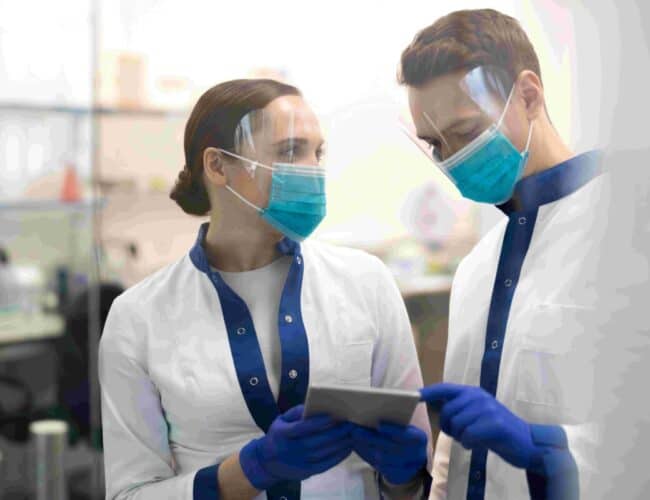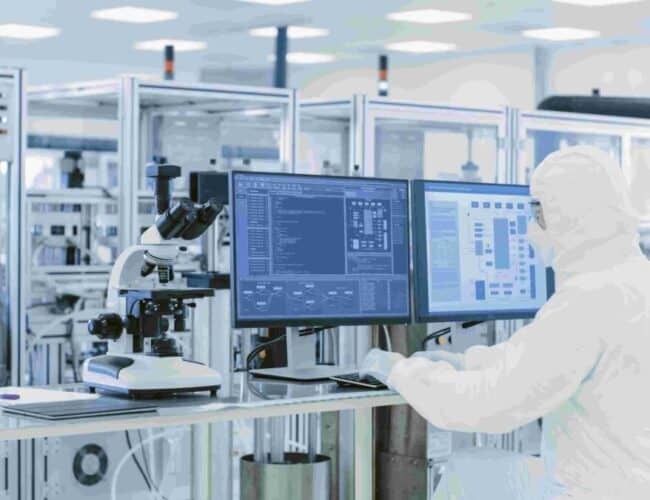
The future of labs is here and it’s closer than you think. Automation and digital transformation are revolutionizing the way labs operate – making them faster, smarter, and more efficient. If you’re operating in a lab environment, now’s the time to embrace these changes or risk falling behind.
Keep on reading to learn how automation and digital tools are shaping the future of labs and why you should care.
Why Labs Can’t Afford to Ignore Automation
Whether you’re in healthcare, pharmaceuticals, or research, you’re expected to deliver accurate results faster than ever. Manual processes, though reliable, are slow and prone to human error. That’s where automation steps in. By automating repetitive tasks like sample handling, data entry, and analysis, you can free up your team to focus on what really matters—innovation.
Think about it. Automated systems don’t get tired, don’t make careless mistakes, and can work around the clock. This means faster turnaround times, fewer errors, and more consistent results. For example, your laboratory can utilize robot-powered multi channel pipette machines to deliver and/or draw liquids in lightning speed.
Digital Transformation: The Backbone of Modern Labs
Automation is just one piece of the puzzle. To truly future-proof your lab, you need digital transformation. This means integrating digital tools and platforms to streamline workflows, improve collaboration, and unlock insights from your data.
Picture this: instead of juggling spreadsheets, paper records, and standalone software, your lab operates on a unified digital platform. Data from instruments flows directly into a centralized system, where it’s automatically analyzed and shared with your team. No more manual data entry, no more lost files, and no more siloed information. Everything is connected, accessible, and actionable.
Digital transformation also opens the door to advanced analytics and artificial intelligence (AI). With AI-powered tools, you can uncover patterns in your data that would be impossible to spot manually. This could lead to new discoveries, better decision-making, and a competitive edge in your field.
Worry not. If your company needs professional guidance on how to successfully carry out a digital transformation campaign, there are experts out there you can tap into. Don’t hesitate to connect with the expert team at Atmosera and others – they’re equipped with the right resources to help with digital transformation of your laboratory.
Key Advantages of Embracing Automation and Digital Technologies
Still on the fence about whether automation and digital technologies are advantageous to your laboratory or not? Check out their purported benefits below:
- Increased Efficiency: Automation speeds up processes, while digital tools eliminate bottlenecks. Together, they help you do more in less time.
- Improved Accuracy: Machines don’t make typos or misplace decimal points. Automated systems ensure your data is precise and reliable.
- Cost Savings: While the initial investment might seem steep, automation and digital tools reduce long-term costs by minimizing errors and maximizing productivity.
- Enhanced Collaboration: Cloud-based platforms let your team work together in real time, no matter where they are.
- Scalability: As your lab grows, automated systems and digital tools can easily scale to meet your needs.
Overcoming Challenges in Adoption
Of course, transitioning to an automated, digitally transformed lab isn’t without its challenges. Cost is a common concern, especially for smaller labs. But remember, this is an investment in your lab’s future. Start small, prioritize high-impact areas, and scale up as you see results.
Another hurdle is resistance to change. It’s natural for your team to feel uneasy about new technologies – they see them as a disruptive innovation. The key is to involve them early, provide training, and show how these tools will make their jobs easier, not harder.
Finally, there’s the issue of data security. With more data being stored and shared digitally amongst lab workers and other relevant stakeholders, protecting it is crucial. Select platforms with robust security features and establish clear protocols for data management.

How to Get Started with Automation and Digital Transformation
Ready to take the plunge? Here’s a step-by-step guide to get you started:
- Assess your needs. Identify the pain points in your laboratory design and operations. Are you struggling with slow processes, data management, or accuracy? Focus on areas where automation and digital tools can have the biggest impact.
- Set clear goals. What do you want to achieve: faster turnaround times, better collaboration, or boost efforts to foster scientific innovation? Define your objectives so you can measure success.
- Choose the right tools. There’s no one-size-fits-all solution. Research platforms and systems that align with your goals and budget.
- Train your team. Ensure your team is comfortable with the new technologies. Offer training sessions and ongoing support.
- Monitor and adjust. Track your progress and be prepared to tweak your approach as needed.
Sustainability and the Lab of the Future
Automation and digital transformation aren’t just about efficiency—they’re about promoting sustainability as well. By reducing waste, optimizing resource use, and minimizing energy consumption, these technologies can help your lab operate more sustainably. For instance, automated systems can precisely measure reagents, reducing waste and saving money.
Final Thoughts
The lab of the future is here, and it’s powered by automation and digital transformation. These technologies aren’t just nice-to-haves—they’re must-haves for any lab that wants to thrive in a fast-paced, data-driven world. By adopting them, you’ll not only improve efficiency and accuracy but unlock new possibilities for discovery and innovation too. So, what are you waiting for? The future is in your hands—embrace it today.